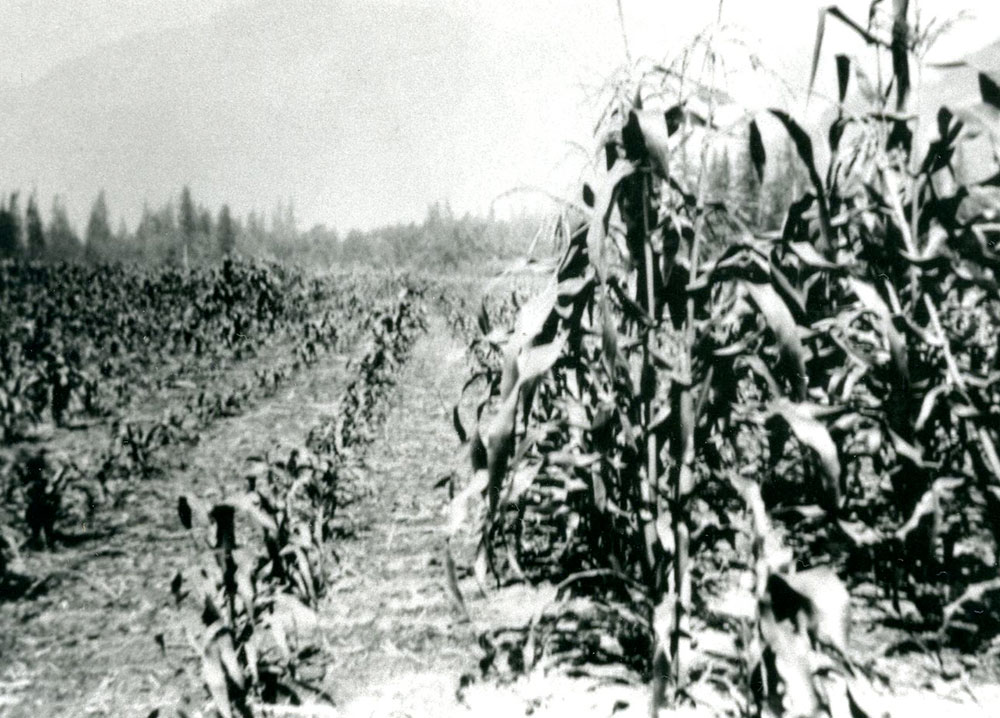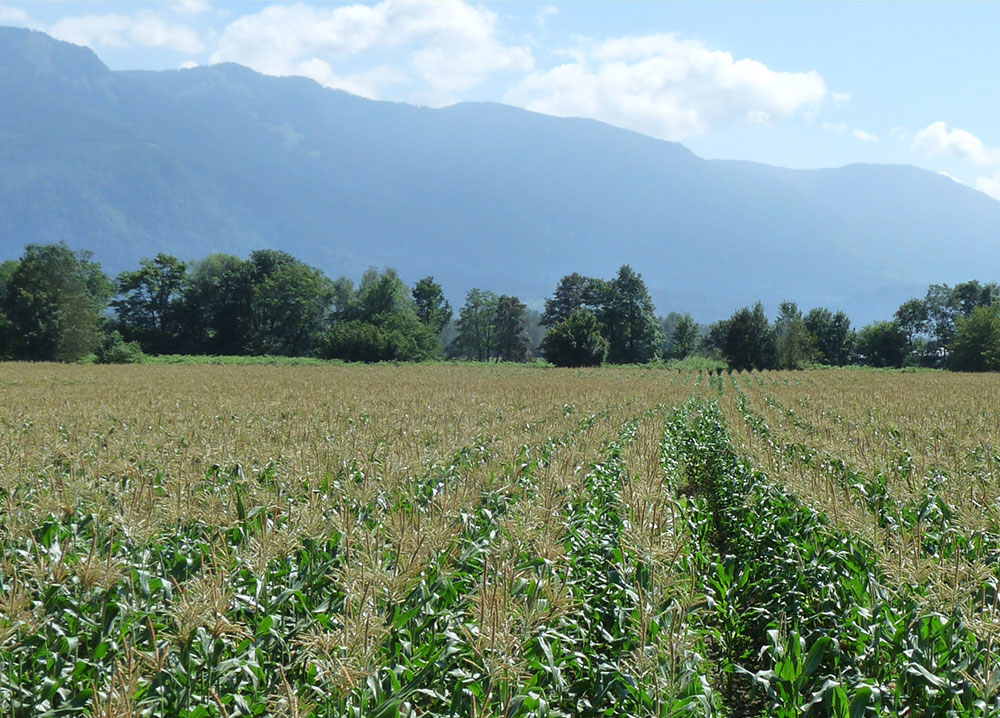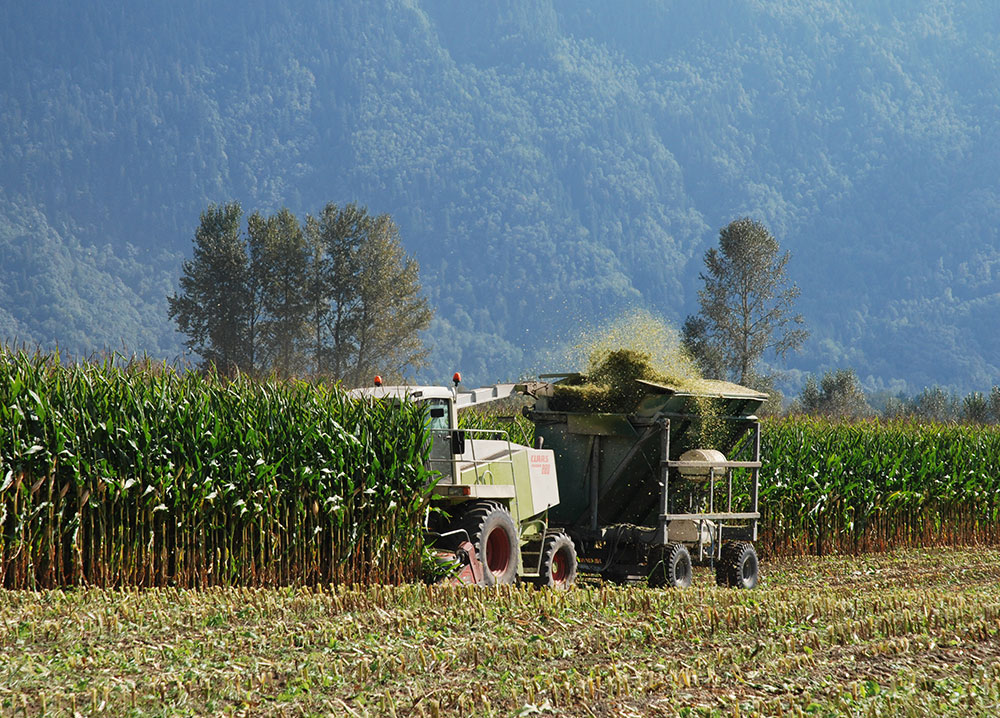Growing Fields of Gold
Early farmers of the Agassiz-Harrison Valley perpetuated their corn varieties by selecting the best cobs each year and saving the seeds for planting the following year. Fields were prepared and tended using teams of horses or oxen and hand ploughs. Individual seeds were sewn by hand, and subsequently with different equipment as technology advanced. Individual ears were hand-picked until mechanization became available; today mechanical corn harvesters complete the work of field hands and carts.
Two varieties of corn have traditionally been grown in Agassiz:
- Sweet/Cannery Corn: This variety has been developed for human consumption. It is usually harvested before the sugar is converted into starch, which results in sweeter kernels. It can be purchased as cobs or kernels, either frozen or canned, at your local grocery store. The tassels are lightly-coloured, the cobs are small, and the plants grow to between 1.5 and 2.5 m high.
- Field/Dent/Cow Corn: This variety has a number of uses: biofuel (ethanol), plastics, pharmaceuticals, syrup, and livestock feed. The tassels have a reddish-tinge, cobs are large, and the plants can grow to over 4 m high.
Field corn is one of the main crops fed to dairy cattle in the District of Kent. It consists of 70 to 80% carbohydrates which provide the animals with energy. The entire plant is used when corn is harvested. Farmers store the shredded corn plants in airtight bales that keep the contents from spoiling. This type of corn is called silage or fermented forage.




